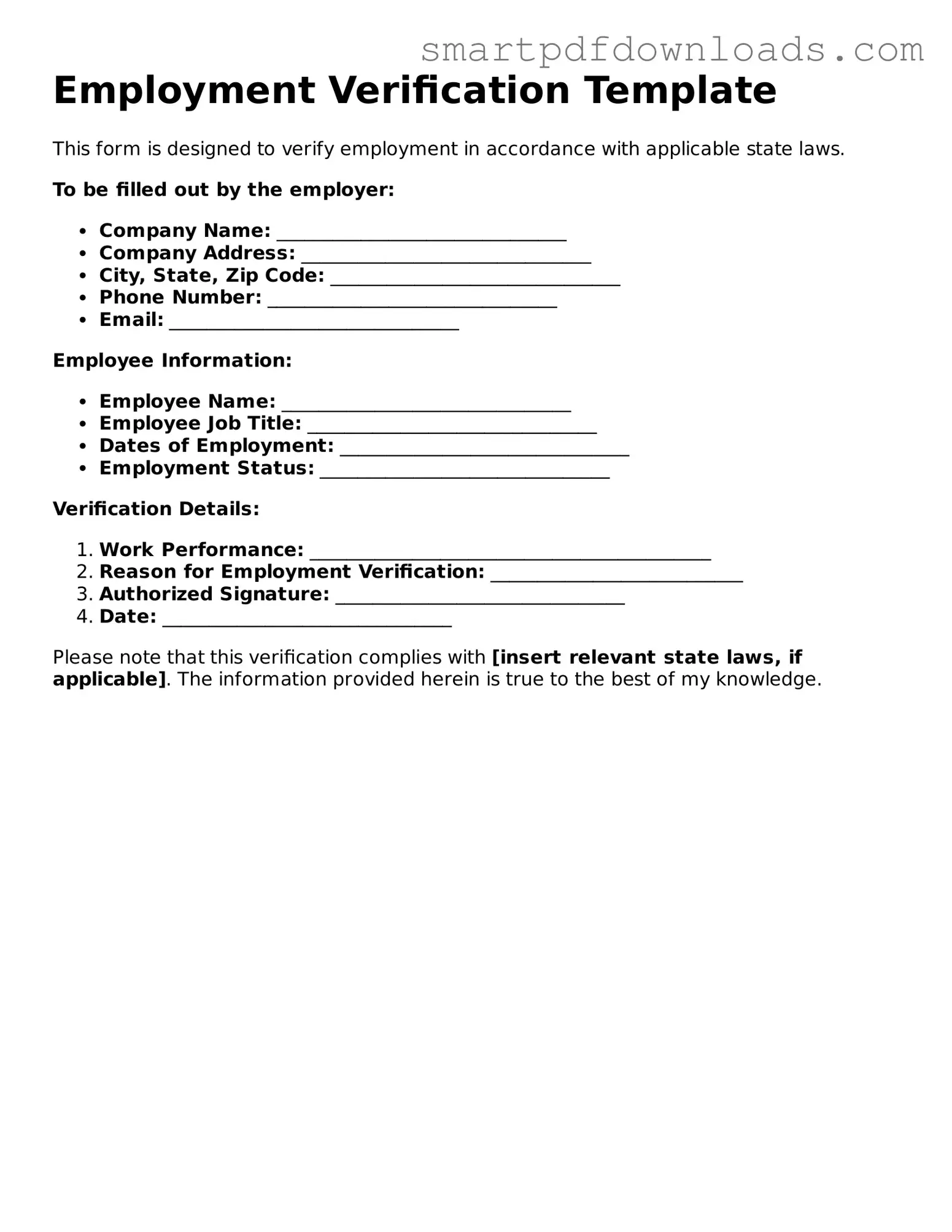Employment Verification Template
This form is designed to verify employment in accordance with applicable state laws.
To be filled out by the employer:
- Company Name: _______________________________
- Company Address: _______________________________
- City, State, Zip Code: _______________________________
- Phone Number: _______________________________
- Email: _______________________________
Employee Information:
- Employee Name: _______________________________
- Employee Job Title: _______________________________
- Dates of Employment: _______________________________
- Employment Status: _______________________________
Verification Details:
- Work Performance: ___________________________________________
- Reason for Employment Verification: ___________________________
- Authorized Signature: _______________________________
- Date: _______________________________
Please note that this verification complies with [insert relevant state laws, if applicable]. The information provided herein is true to the best of my knowledge.
